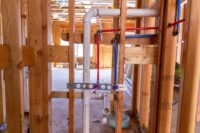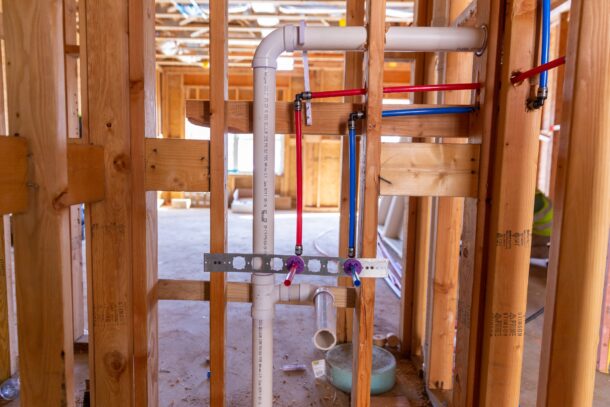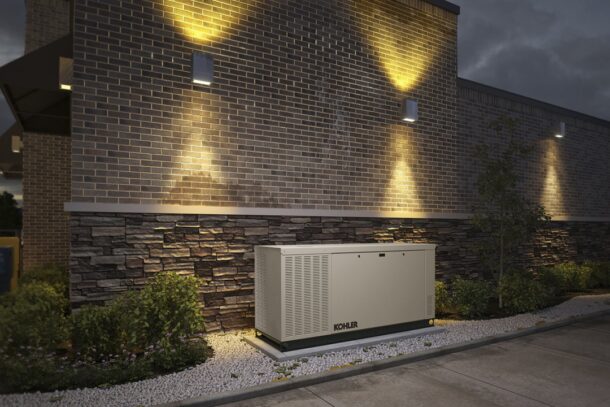By Jeff Stagnoli, Nexstar Network Business Coach Sometimes we leave things until the last minute. I know I do – it’s human nature! Once a year, a few days before Christmas, I realize I haven’t gotten (or even thought about) any gifts yet, and it never goes well. I end up panic-buying gifts I’m not Read more
Industry Blogs

By Jeff Stagnoli, Nexstar Network Business Coach
Sometimes we leave things until the last minute. I know I do – it’s human nature! Once a year, a few days before Christmas, I realize I haven’t gotten (or even thought about) any gifts yet, and it never goes well. I end up panic-buying gifts I’m not sure people will like, when I know I could have taken a little extra time to make sure each gift was special. Every year, I think, I really wish I would have planned this better.
The holidays come around every year, yet they always seem to catch me by surprise. And as a business coach for the owners of plumbing, heating, cooling, and electrical shops, I know that planning season is just like the holidays for a lot of them – it happens every year, but every year, owners are caught by surprise when it’s time to have their business plans ready to go for the new year.

Now, I know it’s just the tail-end of the summer, most people’s busiest season. You might be wondering why we’re talking about this at all. But this is the time to start talking about reviewing and refining your business plan for the new year. Now. Here’s why:
An early start = reliable data.
Most company budgets are put together in September, October, or November. In order to put together a reliable budget, you’re going to need good numbers and data. When you start now, you’re going to have a little bit of time, going into a shoulder season, when you can make sure you have accurate numbers that you can use to build your action plan.
And just how do you get good numbers and data? Simple! Most businesses use the last three years of tracking to predict the upcoming year. As you gather your numbers, you’ll want to look at your monthly trends for calls/leads run; your conversion rate/closing ratio, and your average sale.
Some basic business planning math:
Take the monthly calls/leads you ran (the homeowners your technicians/sales staff visited)
x
your conversion rate/closing ratio
x
your average sale
=
Your total monthly revenue
This formula works for any business! I’ll prove it to you. Let’s say you and I own a souvenir t-shirt shop on the boardwalk of a resort town. If we wanted to make a business plan for next year, we’d need to be able to plan for the amount of revenue we’ll be pulling in. But how could we predict that?
Well, let’s say we had an electronic headcounter that beeps whenever someone walks in the store. OK: we know how many people visit our store in a year. But how many people buy something? We’d have to look at our number of sales for that. Let’s say 40% of the people who walk in our store buy something. So how much is our average sale? If we looked at our receipts, we’d find out that, on average, each person buying something in our store spent $22. So how do we find our total revenue for last year?

Foot traffic x conversion rate x average sale = our total revenue!
If we know these numbers, and we know them for the past three years, what’s to say that next July we won’t have the same foot traffic? The past nearly always repeats itself. If you use the last three years of data, the numbers will get you so close to exactly how the next year is going to be. You’ll be amazed at how well this works.
But what if we wanted to grow our t-shirt business? This is where we can tinker and try out new ideas. For our t-shirt store, we could put signs out along the boardwalk to get more people to come inside. What if we could get 10% more people to enter the store? What do we predict this will do to sales? What if we rented a second place on the boardwalk a few blocks up? We could likely already predict how many t-shirts we’re going to sell at a second location, based on our data.
You can do this math with any business. Including yours. Look at the past to predict the future. The data isn’t hard to get.
The only way you’re going to be able to have your business plan ready to go in the new year is if you start gathering your data and numbers now. Don’t be the person who just puts two days aside in late November to sit in a conference room with your leadership team, looking at them, saying, “OK, it’s time to plan! Where do we start?” Get prepared – get your numbers in order now. You’ll find business planning for next year is easier than you think, especially if you start early.
 Jeff Stagnoli has been in the industry since 1991. As a business coach for Nexstar Network, he loves helping members create individualized paths to success, and especially enjoys connecting with owners on a one-to-one level. He looks forward to helping members build the businesses of their dreams. Jeff can be reached at jeffs@nexstarnetwork.com.
Jeff Stagnoli has been in the industry since 1991. As a business coach for Nexstar Network, he loves helping members create individualized paths to success, and especially enjoys connecting with owners on a one-to-one level. He looks forward to helping members build the businesses of their dreams. Jeff can be reached at jeffs@nexstarnetwork.com.

When it comes to commercial plumbing, it’s all about making the most secure and reliable connections, and this doesn’t change when it comes to the business side. For any company, finding the best manufacturer to fit your needs can be a daunting task. There’s a lot at stake if products don’t hold up or perform Read more
When it comes to commercial plumbing, it’s all about making the most secure and reliable connections, and this doesn’t change when it comes to the business side. For any company, finding the best manufacturer to fit your needs can be a daunting task. There’s a lot at stake if products don’t hold up or perform well: your time, your money and most importantly, your reputation.
With these things in mind, it’s important to weigh the pros and cons of getting your products from one or multiple manufacturers so you can get the job done right and on time. In today’s economy, sourcing all products from a single supplier is growing in popularity because it offers many benefits. Here’s why working with one manufacturer of commercial plumbing solutions might be the best option when it comes to safeguarding your professional credibility and job quality.

Reliability
No one wants leaky pipes, so when it comes to sourcing plumbing products, it’s crucial to find the quality you can count on. Several issues could arise with faulty products, such as failed connections or improper pipe support, which could lead to safety hazards that harm your reputation or even trigger lawsuits. Because of this, it’s necessary to find reliable products from a reputable manufacturer. Here are a few things to look for:
- Manufacturing process. Manufacturers should be able to follow through on their product promises, and they can better control the quality when they own the manufacturing process from concept to delivery. Look for a manufacturer that oversees multiple, if not all, aspects of product development. Also, look for signs that it maintains a focus on continuous improvement and is transparent about what its products are made of.
- All products should be put through repetitive expert testing to guarantee a standard of excellence that meets industry code and performance requirements. Also, be sure to look for any testing that the manufacturer performs in addition to those required by industry standards.
Product Integration
One of the primary benefits of single sourcing is that all the plumbing products from one manufacturer are designed to work together in harmony, even if it has multiple brands, which in turn creates a more reliable system. For instance, RWC’s SharkBite EvoPEX fittings are engineered to be compatible with SharkBite’s PEX pipe. Knowing that your products are designed to work as one system saves you time researching compatible fits across multiple manufacturers.
However, it is also important to look for products that are versatile enough to work with other manufacturers to give you plenty of options. One example is HoldRite’s PEXRite pipe supports, which are compatible with all PEX tubing manufacturers. Having product compatibility makes product training less complicated, saving you time on the job.

Consistent Quality
It can be difficult to find consistent quality when a system is made with products from multiple manufacturers. Because parts from one maker are designed to work together, when you find a manufacturer you can trust, you’ll know all their solutions have undergone the same standards of testing throughout different product lines. You can have peace of mind that you’ll get the same level of performance whether it be from their PEX pipe or their valves.
Support Services and Resources
Product quality is not the only consistency you should expect. Your trusted manufacturer should have dedicated people or teams to support you throughout the buying and installation process.
- Product support. Company representatives should talk you through product samples, demos and educational presentations to help you decide what’s right for your project. When working with one supplier, you also don’t have to check in with several contacts to verify when all your different products will arrive. And if you have any questions regarding your account, you always know who to ask. Building a relationship improves supplier attention and service and ensures that someone is on your side working to get your products to you on time.
- Estimation services. In commercial construction, you want a manufacturer that provides support throughout your project. For example, RWC provides construction estimating services, providing quick and accurate material and cost estimates at each stage in your project. Typically, this job falls to someone on the contractor’s team; however, outsourcing this task can help you plan your costs and get a competitive bid while giving you back valuable time on the job site. Look for a manufacturer that has your best interests in mind and can help contribute to your success on the job.
- Product resources. You should have access to product specs, installation instructions and technical test data. If you do experience a problem, the supplier should be accessible to talk through your feedback to inform product enhancements and new product development.
Cost and Time Efficiency
In commercial plumbing, time and money are key considerations when choosing the right manufacturer to work with. Something to think about is cheaper isn’t always better. Even if a manufacturer’s product has higher up-front costs, it could actually save you more money on labor costs and provide better quality in the end, keeping you on track and within budget.
Comparing costs across suppliers can be time-consuming and potentially delay your project. With single sourcing, you don’t have to juggle multiple invoices or relationships with vendors.
Making a Reliable Connection
Just like with product quality, cheaper isn’t always better. Putting in the groundwork early to find one trusted manufacturer can save you time and money in the end. As every contractor knows, all projects come with so many moving parts and fluctuating variables that having peace of mind about your product performance and longevity is a big help. With a reliable manufacturer on your side, you can safeguard your reputation while also keeping your contracts on schedule and within budget, making all the difference from job planning to completion.
 Guest Author
Guest Author
Emily Connell is the Director of Brand Marketing and Communications at RWC — a market leader and manufacturer of water control systems and plumbing solutions for residential, commercial and industrial applications.

Individual contractors are forced to build their own brands influenced by their specific industry, this can be an intimidating but equally rewarding process. For small business owners and service contractors, it’s important to not only begin your business adventure but to build your brand. Developing growth for your business can take time, but there are Read more
Individual contractors are forced to build their own brands influenced by their specific industry, this can be an intimidating but equally rewarding process.
For small business owners and service contractors, it’s important to not only begin your business adventure but to build your brand. Developing growth for your business can take time, but there are certain things every contractor can implement to take their franchise to the next level. Use these brand building tips to grow your clientele and to create an organization that is trusted by consumers everywhere.
Develop a Unique Brand Name
In order to build a contracting brand that attracts customers, it’s essential to develop a unique brand name. It’s equally as important to create a name that’s different from any pre established contracting business. There are a variety of options that every contractor should consider, no matter the industry.
For starters, coming up with a brand name that can act as an acronym makes it easier for customers to remember. To name a couple, brands like UPS (United Postal Services) or NBC (National Broadcasting Company) are great examples.
A common name tip in the contracting community is to incorporate your name or last name to make it your own, for example *Paul’s Plumbing Company*. Additionally, using a specific nickname can also create a more unique, personalized feel to your brand name without using your original surname.
Another reliable way to create a recognizable brand name is by mashing up industry ideas or words to create a catchy name. For example, Netflix is the combination of “internet” and “flicks”. Depending on your industry, mash up two words that are relatable to your services or you can use a business name generator to help you.

Establish a Budget
After developing your ideal brand name, you’ll want to put your growth ideas into action by establishing a budget. Depending on the size of your business, using your savings for your startup is a reliable way to jumpstart your business, but sometimes it isn’t enough. If you don’t know where to start, there are a couple of financial options that can provide coverage for your business growth.
A reliable funding option that has grown in popularity over the years is online lending. Some reliable online lending companies include LendingClub and Sofi. Online lenders can present a more streamlined application process while also providing lower rates. However, you’ll have to manage the loan online along with addressing any additional needs from the lender after the loan.
Another financial option to consider is a SBA guaranteed loan, the Small Business Administration connects with lenders to guarantee loans for business owners looking for additional capital. In comparison to a small business loan, they take a little longer for approval but have lower interest rates.
If you’re a homeowner, a reliable funding opportunity is to use a home equity loan. This financing option is a safe way to fund all of your business building necessities. An equity loan is provided in a lump sum, while also having a lower interest rate than a credit card or personal loan.
Implement Physical Marketing Tactics
Traditional marketing methods include an array of physical tools that contractors can use to spread their business. Depending on your budget, you can implement a number of useful tools consumers can recognize throughout your community. Here are some tools you can use when trying to build a buzz.
A marketing tool that most businesses use, no matter the industry are posters. Crafting an attractive poster with details including prices, images and services is a considerable way to grow your organization. Posting these posters in local hot spots, like a coffee shop or even a tattoo shop are relevant places to gather the attention of potential customers.
We’ve all seen the use of lawn signs to display a variety of messages over the years. Whether they’re used for voting on an election, or for a high school graduation, using yard signage is a reliable way to advertise locally. In the construction, home improvement, and landscaping communities this tactic has become more prevalent. Like any advertisement, you’ll want to provide your brand name, cell-phone number, as well as the services you provide.
Another physical marketing tactic that stands the test of time is the usage of business cards. These are a fantastic way to connect with potential customers in real life while also giving yourself opportunities to grow your own workforce. Similar to a poster, planting your business cards in high traffic areas throughout your community will gradually increase your consumer outreach.

Utilize a Digital Marketing Plan
An element of marketing that can really separate your business from the rest is by using a digital marketing strategy. Like it or not, we are living in a more digital world and your presence online is fundamental when growing your company. Customers are becoming much more savvy when trying to find the information they need on the internet.
One of the best ways for consumers to find you on the web is by creating and optimizing your website. By building an attractive website that provides news, industry insight and relevant content you can further your outreach.
Another way businesses can build their brand is by creating appealing social media accounts. In the digital age, customers and consumers alike are finding ads or digital flyers on Instagram or Facebook. By creating timely and engaging posts on your social media pages, you can generate a solid customer base on the internet.
One of the most successful strategies for customer engagement is to regularly post marketing content that engages your target audience. It’s simple really, all you need is a connection with an internet provider, a solid digital marketing strategy, social media accounts, resonating content and a decent level of engagement. Remember that your content should resonate with the buyer personas you’re trying to reach, so put yourself in the customer’s shoes and think about content that can funnel them to your website where you can sell your products and services.
If you really want to build a presence on the internet you may find hiring an SEO team or implementing an SEO tactic as being beneficial. SEO stands for (Search Engine Optimization), this means that you’re creating and optimizing relevant content online that will help your website rank higher in Google. If you don’t know where to start, hiring a digital marketing professional can help increase the overall authority of your site.
Create a Positive Reputation
In order to maximize your profit, creating a positive reputation is paramount. When consumers search for contracting services, naturally the companies with the highest reviews and ratings garner the most business. Similar to any industry, the greater the service, the better the reviews, the better your company’s reputation.
One way to achieve positive feedback is by providing quality services to your local customers. Providing proficient services throughout the community is a great way to spread word of mouth while adding new clientele to your business.
It’s equally critical to create a Google Business Profile, while also using Google My Business to your advantage. Much like your digital marketing tactics, you want to create positive impressions online. These days, a lot of consumers use Google search to get a better understanding of what a contracting business has to offer in terms of prices, quality, and efficiency.
Similar to Google reviews, Yelp is another application that consumers can use to gauge what a business offers and how they’ve tended to previous customers. Making sure your Yelp page is up to date with positive feedback and images will contribute to your growth.
When creating your own contracting business, there will always be challenges, but it’s important to use these tactics to your advantage. The quicker the growth, the bigger your brand will become. For additional professional contractor insight visit your friends at the Mechanical Hub for the latest industry updates.

Commercial construction professionals can rely on propane for lower emissions, enhanced resiliency Unplanned outages have become increasingly commonplace as the U.S. demands more electricity from a century-old grid. In fact, the United States endures more blackouts than any other developed nation. And according to federal databases at the Department of Energy (DOE) and the North Read more
Commercial construction professionals can rely on propane for lower emissions, enhanced resiliency
Unplanned outages have become increasingly commonplace as the U.S. demands more electricity from a century-old grid. In fact, the United States endures more blackouts than any other developed nation. And according to federal databases at the Department of Energy (DOE) and the North American Electric Reliability Corporation (NERC), the number of U.S. outages lasting more than an hour has risen steadily over the past decade.
A recent article in the Washington Post shows that more than 40 percent of the U.S. population reside in counties that experienced extreme weather events in 2021. As contractors continue integrating backup power, propane should be considered as the energy source to keep buildings operating clean and keeping emissions reduced. Sales of diesel generators have significantly increased due to electric grid disturbances, exacerbating local air quality concerns.
A new study from the Propane Education & Research Council (PERC) emphasizes the need to accelerate decarbonization today with clean energy sources like propane as diesel generators can negate emissions reduction efforts. The analysis, Power Generation: The Emissions Shifting Problem, examines recent power generation trends and how propane systems can offer a resilient, low-emissions solution for commercial construction professionals and their customers.

The Emissions Shifting Problem
Whether planned or unplanned, power outages can happen at any time. In response to the increase in outages, there’s been a spike in generator sales and use. A significant rise in backup generator sales is seen in storm-wrecked coastal areas, inland tornado alleys, and particularly in places like California. This spike in both sales and use is primarily of power generation solutions that are diesel-powered, which is creating a bigger emissions problem and degradation of local air quality.
Propane power generation equipment, including backup generators and combined heat and power systems (CHP), can help businesses be safer and more resilient, avoid economic losses, and reduce emissions. This loss of power to commercial buildings can impact vital systems like smoke and fire detection, elevators, refrigeration units, heating and cooling equipment, health and safety equipment, communications, and many other applications. Propane backup generation insulates companies from these economic losses.
According to PERC’s data, compared to diesel, propane significantly improves local air quality by mitigating nitrogen oxides and particulate matter, both of which are known health hazards. Propane also emits significantly less carbon dioxide and criteria pollutants than diesel-powered generators. In fact, according to the U.S. Energy Information Administration (EIA), propane is 16 percent cleaner than diesel when it comes to carbon dioxide (CO2) per unit of energy. CHP systems offer both power and heat (and/or cooling), while significantly reducing nitrogen oxides, particulate matter, and carbon dioxide emissions compared to units using diesel. Propane-powered systems can reduce CO2 emissions by more than 40 percent depending on the size of the unit, according to PERC’s research.
Propane power generation solutions are already creating opportunities for commercial construction professionals to reduce emissions compared with diesel, but as more renewable propane becomes available, propane solutions will become even cleaner. Renewable propane is made from a mix of waste residues and sustainably sourced materials—including agricultural waste products, cooking oil, and meat fats. Because it’s produced from renewable feedstocks, renewable propane is even cleaner than conventional propane—and far cleaner than other energy options. Renewable propane’s chemical structure and physical properties are the same as conventional propane, which means it can be used for all the same applications without any modifications to engines or equipment. In California, the propane industry has pledged 100 percent renewable sourcing by 2030. In PERC’s analysis, it found that renewable propane can lead to at least a 50-70 percent reduction in lifecycle CO2 emissions compared to conventional diesel and can accelerate deep decarbonization. It also found that blends of conventional and renewable propane are additional practical solutions for accelerating decarbonization.
Propane is a reliable energy source
Propane is a stable, portable energy source that can help support Americans when the grid goes down, ensuring continuous operations. Propane does not degrade like diesel, which means when the generator needs to start, it will. Propane does not oxidize, and it won’t varnish or gum a generator engine’s fuel system. For added resiliency, CHP solutions are a perfect fit for commercial and industrial applications, providing not only much needed electricity but also heat and/or hot water (and/or cooling) during power outages. When used in CHP mode, these solutions can be more than 90 percent efficient when converting fuel to electricity and useful heat.
Propane-powered backup generators ultimately provide peace of mind, especially for commercial operations where refrigeration for cold storage needs or other inventory protections that can fail if utility power is interrupted. Propane is an affordable energy choice capable of delivering efficient, on-site energy during power outages. Replacing diesel assets with propane-powered equipment will continue to push us toward significant air quality improvements and decarbonization.
To see more of PERC’s research supporting the benefits of using propane-powered back-up generators, visit Propane.com/Research.
 Bryan Cordill is the director of residential and commercial business development at the Propane Education & Research Council. He can be reached at bryan.cordill@propane.com.
Bryan Cordill is the director of residential and commercial business development at the Propane Education & Research Council. He can be reached at bryan.cordill@propane.com.

Homeowners in the United States are becoming more inclined to update their residences with the latest smart home technology. Smart homes are the homes of the future and come fully equipped with a range of interconnected devices to offer benefits to the average homeowner. Smart voice assistants, smart kitchen appliances, smart home security systems, and Read more
Homeowners in the United States are becoming more inclined to update their residences with the latest smart home technology. Smart homes are the homes of the future and come fully equipped with a range of interconnected devices to offer benefits to the average homeowner.
Smart voice assistants, smart kitchen appliances, smart home security systems, and smart HVAC systems are examples of smart home technologies that homeowners are looking to adopt. It shouldn’t come as a surprise, considering how technology has developed over the years and how the consumer market is becoming more tech-savvy.
As American homes are evolving, how will the role of technicians change? Will technicians learn new skills or technologies to earn business from homeowners? Below is more information about smart home technology and how the role of technicians may change in an interconnected digital era.

Smart Homes Becoming More Commonplace
Statista estimates that the number of smart homes will increase and surpass the 350 million mark by 2023.
Many big tech companies, including Apple, Samsung, Google, and Amazon, are releasing new smart home technologies for customers. Smart TVs, sound systems, voice assistants, security systems, lighting systems, and thermostats are some examples of popular smart home technologies.
Homeowners reap a handful of benefits by using smart home tech. Convenience is likely the primary benefit – most smart home tech can be controlled by one device, usually a smartphone or tablet. These internet-enabled devices connect to hubs or applications for ease of use.
Impact of Smart Home Technology on the Role of Home Technicians
Because so many homeowners are equipping their homes with smart technology, this will likely change, if it hasn’t already, how home technicians do their jobs.
Typically, smart home technology does not have to be maintained or repaired as often as traditional home technology. For example, most systems will alert homeowners in advance of a breakdown, and some will even help homeowners troubleshoot issues.
However, because smart home technology has complex inner workings, technicians may have more difficulty completing repairs. Higher-end equipment often requires more skilled technicians to handle these types of repairs, or those with knowledge of proprietary systems.
What Technicians Need to Know
It will be crucial for technicians specializing in home maintenance or repairs to educate themselves and understand how basic smart home technology works. Service technicians will have to learn how these home devices connect and how each device functions to diagnose and repair issues.
Beyond working on smart technologies within customers’ homes during repairs, technicians may need to rely on these technologies for their own operations. For example, technicians might employ the use of electronic signatures to fuel their business and close deals more efficiently. Or, they may use wearables to capture and improve upon connected data like inventory and location information.
One major reason technicians will need to become more knowledgeable about smart home tech is that homeowner expectations are changing. A technician who has expanded their skillset to repair smart home tech will be in higher demand than those who do not.
As smart homes go mainstream, technicians capable of working on these complex smart home technologies will be well-positioned to offer their repair services, allowing their business to grow and generate more revenue.
Technicians: Keep Your Skills Relevant in the Age of Smart Home Technology
All technicians need to stay up-to-date with the latest technologies. Whether they specialize in HVAC, lighting, or plumbing, modern technicians should be aware of the adoption of smart home technologies to better prepare themselves for these repairs.
 Guest Blogger: April Miller is a managing editor at ReHack.com who specializes in engineering and construction technology. You can find her work published on sites like Open Data Science and The Society of Women Engineers.
Guest Blogger: April Miller is a managing editor at ReHack.com who specializes in engineering and construction technology. You can find her work published on sites like Open Data Science and The Society of Women Engineers.
